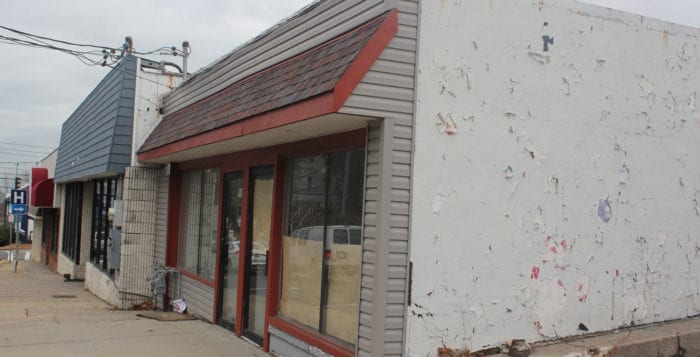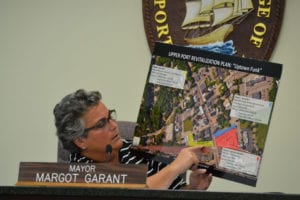What was intended to be a first step in cleaning up a Port Jefferson Village park for future repurposing, instead, served as fodder for community outrage at a March 6 board of trustees meeting. Roosevelt Park, which lies hidden in a wooded area near the southern end of Roosevelt Avenue between Dark Hollow Road and the train tracks in the village’s southwest corner, was cleared of fallen leaves and dead branches recently, though several unintended consequences were brought to the board’s attention by people who live near the park.
A corporation that built houses in the village in the 1970s, as a condition of project approval, was supposed to give three parcels on the western side of Roosevelt Avenue, opposite the ball field, to the village for recreational use. It was also supposed to contribute $5,000 to the village so it could acquire a fourth piece of land, which is pinned between the existing park, the three adjacent parcels and the Long Island Rail Road track that borders the park’s southern side. Due to a clerical mistake, the transaction wasn’t officially completed until May 2016.
The village has discussed possible projects for the site, but at the present time nothing is remotely close to being implemented. Several community members voiced issues with what was done in the wooded area without notifying the residents.
“Ninety percent of what we brainstorm we don’t do…we have no present plan to do anything there.”
—Larry Lapointe
“I was away for a week,” said Steven Metzler, who lives on Roosevelt Avenue and came to the meeting out of interest. “They came in and supposedly took down dead branches and whatnot, but if anyone took a look at it, it looked like they took a small bulldozer through and created paths and tracks for something, down to the sand.”
His concern, living in the area for 20 years, is that he’s had pheasants, turkey, grouse, red-tailed hawks, deer and red fox around his property for years, and he and his neighbors are afraid now that the lot is cleared, they’ll come to their property for shelter or have nowhere to go at all.
“Someone else suggested a community garden — that’ll last about a month,” Metzler said. “It’s like living in the Rocky Mountains almost here. And it’s beautiful, it’s a lovely thing.”
Other neighbors of the park said the dense brush used to insulate their homes from noise and light from the train tracks and questioned why the cleanup had to be done so deep in the woods.
Several village officials defended the cleanup project.
“I went with my parks supervisor and we went through all of our parks — we went to the country club, we went to Caroline [Avenue Park], we went to Rocketship [Park],” said Renee Lemmerman, superintendent of recreation and parks. “All of the dead branches, all of the leaves that have accumulated — we cleaned those up. We didn’t cut any trees down. They did some pruning of trees that were on the fence and came down. We cleaned up. That’s all we did in all of our parks.”
Lemmerman also denied the use of heavy machinery to do the job.
Trustee Stan Loucks and Deputy Mayor Larry Lapointe, who stood in for the absent Mayor Margot Garant during the meeting, both stressed the fact that ideas for the site are only in the brainstorming phase, and community forums will be held before any plan is approved to ensure all voices are heard.
“We brainstorm all of the time about every village program, about every village resource,” Lapointe said. “Ninety percent of what we brainstorm we don’t do. We asked the director of recreation to do some brainstorming about that property and about the acquisition of a parcel there that adjoins the two parcels that we already own, which by the way, were given to the village by the developer when these neighborhoods were built, to build parks. We have no present plan to do anything there.”
Some ideas discussed have included a vegetable garden, a “fit park” or a bike trail.


















